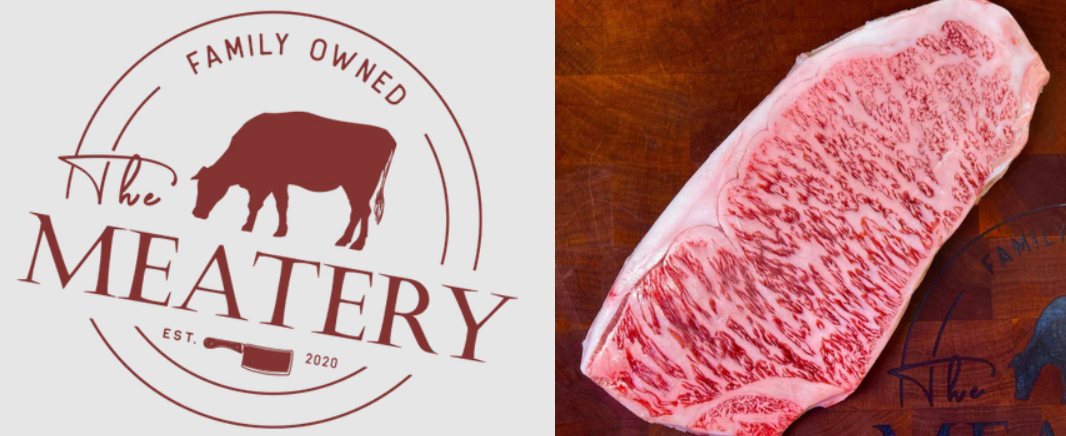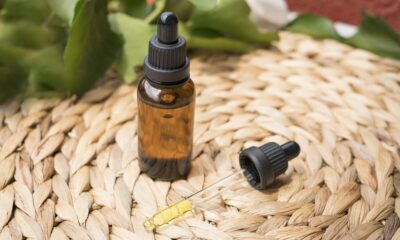HEALTH
What is Australian Wagyu?

SAN DIEGO, California – In searching to find the best quality Wagyu beef, consumers online will most likely have a few common questions, one of them being, “What is Australian Wagyu exactly?”
Australian Wagyu?
“Wagyu” literally translates to “Japanese Cow.” Australian Wagyu is precisely what it sounds like, Japanese Wagyu that was born, raised and processed in Australia. These cattle did not swim to Australia, however. In the early 1990s, some entrepreneurial figures were able to exploit a Japanese/United States reciprocal trade agreement in order to export (from the United States) fullblood Wagyu genetics into Australia, giving birth to Australian Wagyu as we know it today.
Australian Wagyu as it exists today comes in 3 forms: F1 (cross-bred 50/50, similar to American Wagyu), Purebred (93.75% Wagyu genetics or higher), and Fullblood (100% traceable Wagyu genetics). Australian Wagyu is characterized by a more balanced taste, texture, and beefiness than Japanese A5 Wagyu. In fact, many Customers prefer Australian Wagyu to Japanese A5 Wagyu due to it “eating more like a steak.”
A hungry man can comfortably consume 8-14oz of Australian Wagyu. While Japanese A5 Wagyu contains an average of 3-4 times the amount of marbling (intramuscular fat) that an American Prime Angus steak does, Australian Wagyu has 2-3x the marbling, making it slightly less rich. The flavor profile of Australian Wagyu is beefier, and less buttery than Japanese A5 Wagyu. It is an absolutely delightful, balanced experience that we encourage everyone to try.
What Makes Australian Wagyu Distinct?
Traditionally, the Japanese government has not allowed the export of live Wagyu cattle or their DNA, declaring the cattle a “national treasure”. However, between 1975 and 1997, the Japanese government did allow the export of a handful of animals that were taken to Australia, the United States, and other nations.
Inspectors go above and beyond just marbling scores when grading Wagyu beef in comparison to their Australian Wagyu counterparts. In addition to marbling, Japanese inspectors also examine the beef’s yield and firmness/texture. They also find the yield, which is simply the measure of how much beef is available compared to the weight of the carcass. The higher the yield, the higher the yield grade. Any Wagyu carcass with a yield of 72% or more is given a grade of “A”. Carcasses with a yield between 69-72% are given a grade of “B”, with anything below 69% receiving a “C” grade.
Australian Wagyu are fed for only 350 to 450 days as opposed to the 600 days of feeding Japanese Wagyu cows enjoy. Australian Wagyu cattle are typically given a diet of grass with wheat and barley.
Although both Australian Wagyu and Japanese Wagyu are highly marbled, only Japanese Wagyu is regarded as having the “melt-in-your-mouth” texture. This is largely due to the higher levels of marbling that typically occur within Japanese Wagyu. Since Japanese Wagyu cattle are fed for up to 250 more days before slaughter than their Australian Wagyu counterparts, they may be more tender and possess more marbling. You may notice that Japanese Wagyu possess a unique “sweet” flavor, which may be attributed to the higher levels of marbling found in Japanese Wagyu. The Australian Wagyu, variably, has a stronger, savory flavor and firmer texture.
Outside of Japan, Australia now has the largest population and breed association of Wagyu. Since 1997 however, no additional Wagyu cattle or DNA have been exported from Japan. Australian Wagyu farmers rely on breeding their existing Wagyu cattle to continue their production.
Regardless of the nation in which the cattle are raised, the location within the nation also has a direct impact on taste. Northern Australia also offers cattle plenty of open space and access to tropical grasses for feeding thanks to its more humid environment. In Southern Australia, the grasses are often more “traditional”, with feed varying from farm to farm. Japan, however, is a small and mountainous island nation with minimal land for raising cattle in comparison to Australia’s vast amounts of open plains. This can make it more difficult and expensive for Japanese farmers to raise their Wagyu cattle. Japanese Wagyu cattle also go through longer feeding and life cycles than Australian Wagyu cattle.
The Meatery on this Excellent Product
Nicholas Fiorentino founded TheMeatery.com in 2020 during the height of the pandemic to provide premium meats to consumers that couldn’t go to restaurants. It has since grown very quickly, and today the company ships all throughout the USA and Canada.
The company’s first 2 years have provided invaluable insight into its customers’ preferences and needs, including preparation recommendations. Fiorentino recently unveiled a new website and hopes to customize the shopping experience by matching customers with the perfect cut every single time. A new feature, Meatery Live, was created to allow customers to video chat directly with one of the company’s knowledgeable butchers and pick the exact steak that will be shipped. Over these last two years, TheMeatery.com has built a dedicated base of consumers, many of which make several repeat orders of products like the A5 Wagyu.
The Meatery opened its second retail storefront in May, with plans to open more in 2023. TheMeatery.com was also recently accepted into the Kobe Beef Association, making TheMeatery.com one of just a handful of providers in the United States authorized to sell genuine Kobe Beef.
Real Wagyu at a Lower Cost
When comparing Australian Wagyu versus Japanese Wagyu, you may notice a difference in taste, texture, and tenderness. Multiple variables will have an impact on the flavor profile associated with each cut of Wagyu Beef. However, regardless of where your Wagyu beef is from, you can be certain that you will be enjoying a special cut of beef that is world-renowned for its rich taste.
When you eat Australian Wagyu, you’re getting a high-quality dining experience that is distinct from its Japanese counterpart for a cheaper price.
The Meatery was founded in 2020 during the height of the pandemic as a means to ship Wagyu Beef to consumers unable to enjoy it at restaurants. The Meatery has since grown to shipping throughout the USA and Canada and has two retail locations in the San Diego area with many more planned.
To learn more, visit TheMeatery.com.

-

 BUSINESS3 months ago
BUSINESS3 months agoGrow Your Audience with USA Instagram Followers
-

 TECH3 months ago
TECH3 months agoFreedom Forever Solar Reviews Explain How Conversational Intelligence Turns Customer Interactions into Insights
-

 HEALTH3 months ago
HEALTH3 months agoExploring the Best Cannabis Product Options for Every Lifestyle
-

 BUSINESS3 months ago
BUSINESS3 months agoOn the Frontlines of Conservation: The Role of Tracker Academy Graduates in Anti-Poaching